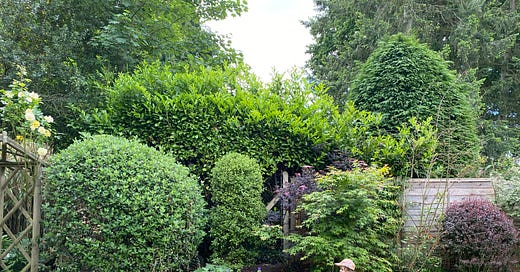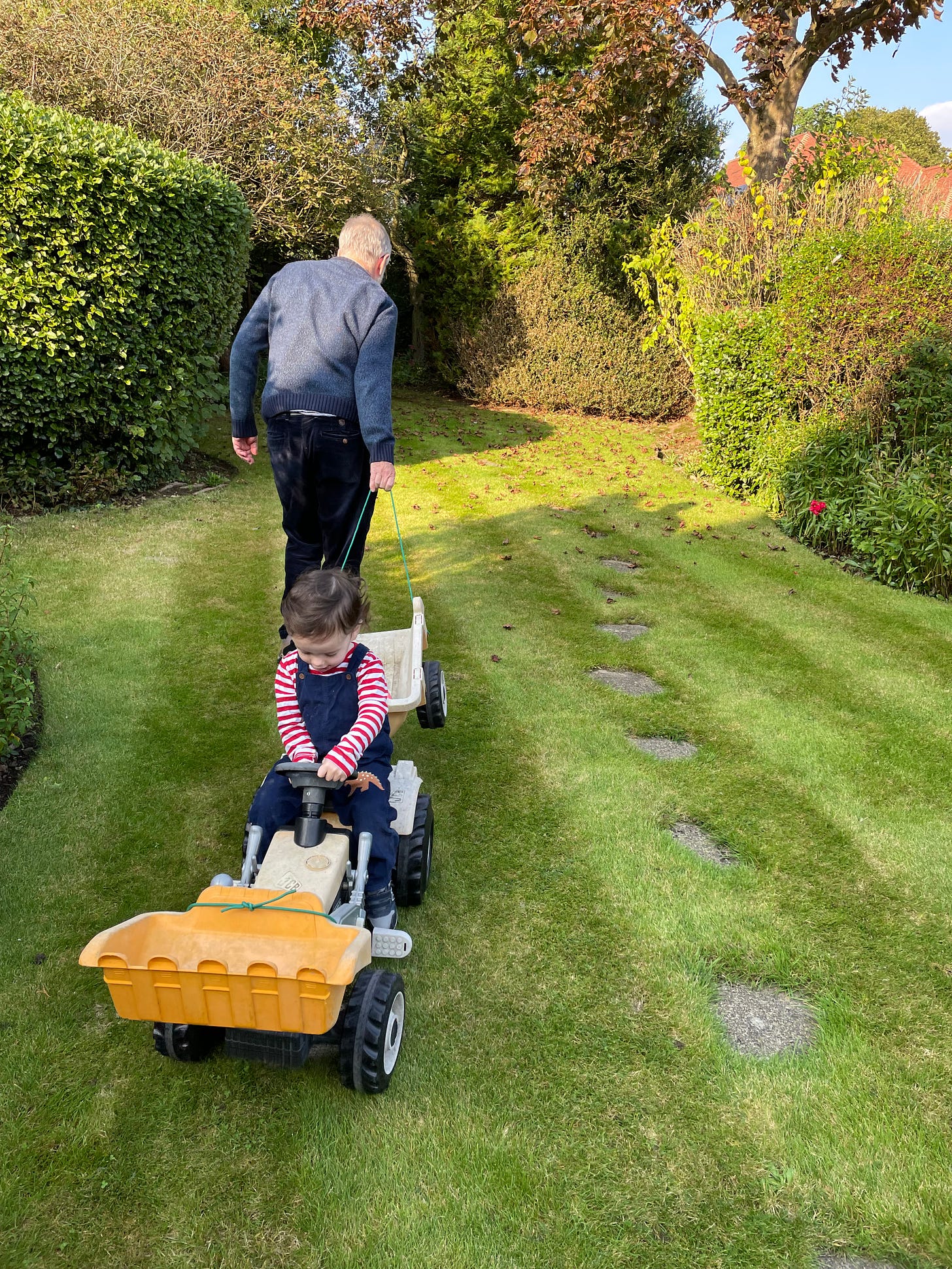The joy of other people’s gardens
Why I love spending time in gardens other than my own, especially at the moment
Hi, I’m Dan, and this is my alternative gardening newsletter, The Earthworm. Whether you’re a first-time reader or a long-time subscriber, thanks for being here. The Earthworm is a reader-supported publication. The two best ways you can support my work are to share this newsletter with a friend, and to consider upgrading to a paid subscription. And remember, the entire back catalogue of features, interviews, columns and more is freely available to all members of The Earthworm community. Why not take a scroll down memory lane?
I’ve spent very little time in my garden of late. For all the usual reasons, of course. Work. Childcare. Social plans. Bad weather. But also, overwhelm.
Spring ripens slowly, steadily. But by early June, the longer, stronger hours of sunlight administer a steroid hit to garden greenery that sends it hurtling out of control (and in the case of one or two of my climbers, out of sight) at an uncatchable pace.
I have managed to pot on some veg, and feed and water the containers, but this is the bare minimum of what a planted garden requires of its custodian at this stage of the season. What I need is more time.
Without it, the current situation arises, which is that every time I look out of the window, my heart sings, then sinks, as I first see the rambling rose in full flower, then realise l’ll need to get the stepladder out to deadhead all the past-their-best blooms. I see the buds appearing on the passion flower, then notice the sprawling, still untrained tendrils of new growth, tangling into a tight knot. I see the catmint covered in flowers, then clock its straggly habit, in desperate need of a Chelsea chop.1 I could, as much as it stresses me out to say it, go on and on and on.
At this time of year, I begin to find it impossible to enjoy spending time in the garden. That is, in my garden. Sit down with a good book, or a cup of tea, “or something stronger” (as TV gardening presenters like to say)? You must be joking! There’s simply too much to do.
I hope – no, I know – that I can claw back control. But we’re not there yet. Which is why I am taking such immense pleasure in spending time in other people’s gardens at the moment.
Other people’s gardens are relaxing. My in-laws live in Hertfordshire, in a near-London village where suburbia dissolves into the fields and forests of the English countryside. Their garden is modest (though still a good three or four times larger than mine), mature, and well maintained by a combination of the efforts of my mother-in-law and regular visits from a pair of professional gardeners.
The hedges are clipped. The lawn is neat and striped. The hammock rocks gently alongside the many roses. If there is work to be done in this place, I cannot see it, and I certainly need not do it. There is no stress in this garden, only birdsong and dappled light and free childcare. Bliss.
Other people’s gardens are revealing. I got back last night from Norwich, a city which I’m ashamed to say I had never been to before, full of ancient history and contemporary culture and some lovely public gardens. I was there for a wedding – the first I’d attended since the full gamut of lockdown restrictions were lifted – and it was pure joy.
We stayed in an AirBnb in the centre of town. I love AirBnb. Don’t get me wrong, I don’t enjoy or advocate the way landlords use it to monetise their second, third or fourth homes, thus contributing to spiralling property prices and rental rates and driving people out of an area who would otherwise live and work there. What I love is, as a punter, having the opportunity to nosy around inside someone else’s home and, even better, someone else’s garden.
Our Norwich garden was entirely unlike our own: a narrow courtyard, cast in shadow by the surrounding buildings and established trees. Unlike the interior design choices (all mirrored picture frames and plastic chandeliers), the planting was tasteful and restrained. Shrubby shades and textures of green dominated – bay laurel, Japanese laurel, pittosporum – with budding hydrangeas and crocosmia shoots threatening bursts of brightness in the weeks to come.
And even though the situation, composition and conditions of this garden may have been nothing like my own, I still found that there was much in it to be inspired by, and much to learn. Namely, in a cool, dark, green space, variegated foliage2 – such as that on the well-tamed ivy growing as ground cover – creates a welcome visual highlight.
Other people’s gardens are reassuring. Other people’s gardens aren’t always perfect. Other people’s gardens have weeds. Other people’s gardens have patchy, unmown lawns. Other people’s gardens have knackered old benches, waterlogged beds, slug-munched hostas, aphid-infested runner beans, overcrowded borders, dehydrated pots. In other words, other people’s gardens have all the same problems as mine, or yours.
I often stand in the centre of my garden and feel disappointed in myself for letting things slip; or overwhelmed by my garden to-do list that, like a pernicious perennial weed, seems to grow back just as fast as I’m able to tackle it. But other people’s gardens offer a reminder that the perfection that so many of us strive for in our own isn’t just rare, but practically impossible. Other people’s gardens demonstrate that a garden doesn’t have to be anywhere near perfect to be perfectly pleasant; it doesn’t have to be “good” to be enjoyable.
When it comes to our gardens, our work will never end. Our to-do list will never be complete. Our vision may never be fully realised. But that doesn’t make us failures; it makes us gardeners.
Did any of this resonate with you and your own experiences of gardening? Have you enjoyed spending time in – or learned from – someone else’s garden? As ever, I’d love to hear from you – just hit reply to this email or, better yet, leave a comment. Thanks for reading.
The Chelsea chop, so named because of the time of year in which it is performed (around the Chelsea Flower Show), is the act of pruning certain herbaceous plants by as much as half, in order to encourage bushier growth and more flowers.
Variegation is used to describe a plant with differently coloured areas, usually on its leaves or stems. The most common examples are probably green-and-white or green-and-yellow leaves on, for example, ivy or euonymus.






I know these gardens ... nice to know they’re appreciated!
I definitely relate here. We'll be sitting in the backyard sipping a cool drink and Brooke will comment how nice everything looks and I'll just think how next year the cardinal flower and prairie smoke should be better established and then it will REALLY look nice. But I guess that's part of gardening – learning how to appreciate the process and imperfection.